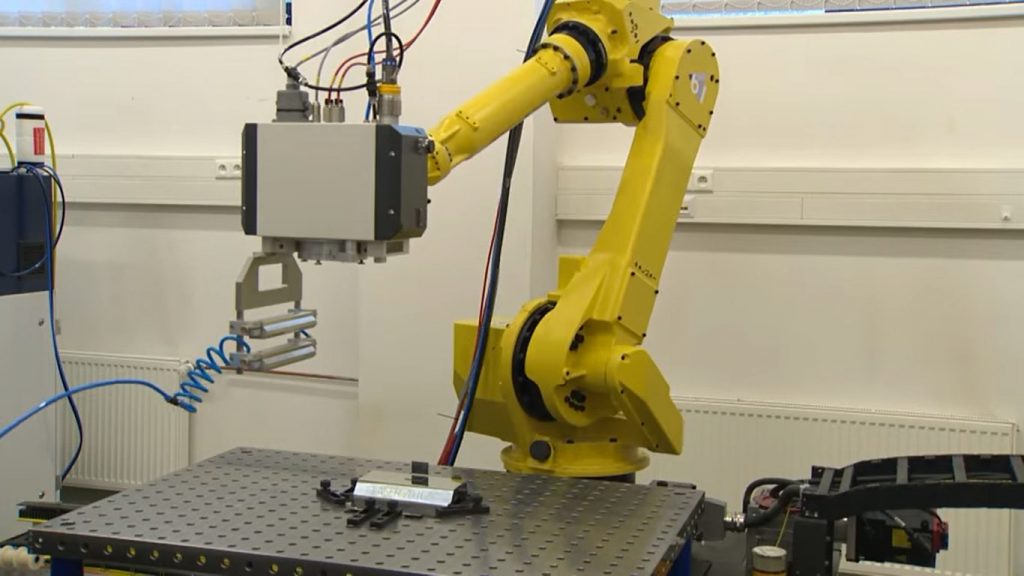Last updated on August 13th, 2022
Welding is an evergreen in-demand skill that consists of many methods. Heat is used in a variety of welding ways to bind metallic pieces together, and every project demands a different technique with a clean bead and result. However, most people are unaware of different varieties in welding.
In the rush of much information, we have summarized the types of welding and their uses quickly and precisely. Although there are many strategies, we have highlighted a few effective and widespread methods.
Contents
Types of Weldings
MIG Welding
A simple arc welding method in which electric arc is initiated between the metal and consumable wire electrode and fed into the weld pool from the welding gun. Shielding gas is supplied to the electrode by a Mig gun that saves the weld pool from atmospheric impurities.
It was initially used for aluminum welding in the United States in early 1949. It’s a speedy process that produces smooth and shining welds. The common areas of its uses are repairing, auto industry, and fabrication.
Stick Welding
An old-fashioned and simple arc welding method with a consumable stick electrode. The electrode combines and softens the metal by producing the arc between the base metal and the covered metal electrode.
The notable point is that as the stick electrode melts, the protective cover also melts but secures the workpiece from gasses in the air.
It was introduced in 1930 and still, it’s being used all over the world. Shielding or any other gas is not required for it. Whether it is outdoor, dirty surfaces, or any inclement weather conditions, stick welding works well. It is not recommended for thin metals.
TIG Welding
An advanced and modern technique in which arc is initiated between the metal workpiece and consumable electrode.
The prominent point is that for TIG welder, filler rod is not compulsory; it’s up to you whether you use it or not. Shielding gas (argon) is used for the GTAW process.
It was first used by a local welder in the 1940s in California, United States. Auto and aerospace sectors are widely using it. Aluminum and steel metals can be easily welded by Tig method.
Flux Cored Welding
A semi-automatic welding strategy that is widely used in shipbuilding, manufacturing, and underwater welding. Like Mig, it also uses a filler rod as an electrode. In FCAW, the filler is fluxed and hollowed out and protects the weld pool, and coats the weld, and the coating makes the weld more stable and strong.
The flux arc welding method was launched in the 1950s as an alternative to stick welding.
Plasma Arc Welding
A precise type of welding process that uses a torch at a very high temperature. It is almost the same as TIG. Instead of a bigger arc, it uses a minor arc. Plasma is formed when gas is compressed inside the nozzle.
The ionised plasma then turns it into an electrically conductive material. This permits the arc to be formed, which produces a very high temperature that can quickly melt the base metal. Like TIG, you can also weld it without filler.
Its main advantage is high welding speed and deep penetration. Mainly, it is used in stainless steel welding, pipes welding, marine, aerospace, and electronic industries.
Laser Beam Welding
In this welding method, a laser is used for welding as a heat source. Mostly, thermoplastics are welded by this process. It is used to weld all types of steel metals, aluminum, and titanium.
Welding on complicated metals, precise welding, and low thermal distortion are its main advantages. The main drawback is high maintenance cost, low energy conversion efficiency, and high skilled workers are required for it.
It was first introduced in the 1970s, but it got a boom in the late 1990s. The medical industry widely owns this process because of its extensive uses.
Electron Beam Welding
A sophisticated process in which beams of electrons are applied to two metals to weld. What’s interesting in this process? It allows you to weld dissimilar metals even if they have different thermal conductivities and melting points.
Although it’s an underrated welding process, it’s used at an advanced level like nuclear, power generation, aerospace, defense, etc.
Frequently Asked Questions
Stick welding is an easy and widely used method. It uses a consumable stick electrode. This process is suitable for any condition.
You can get strong welds by the TIG method, and it’s a challenging process but produces clean, smooth, and strong welds.
Conclusion
These are all types of welding, and most of them are in demand and widely used worldwide. All of them are suitable for different kinds of projects and tasks. My most favorite strategy is TIG and MIG welding.
- How to Use a TIG Welder? Ultimate Guide and Expert Tips - March 14, 2023
- What is a TIG Welder? – Everything You Need to Know - March 11, 2023
- Ahp AlphaTIG 200X(updated 203XI) Review for 2023 - February 7, 2023







